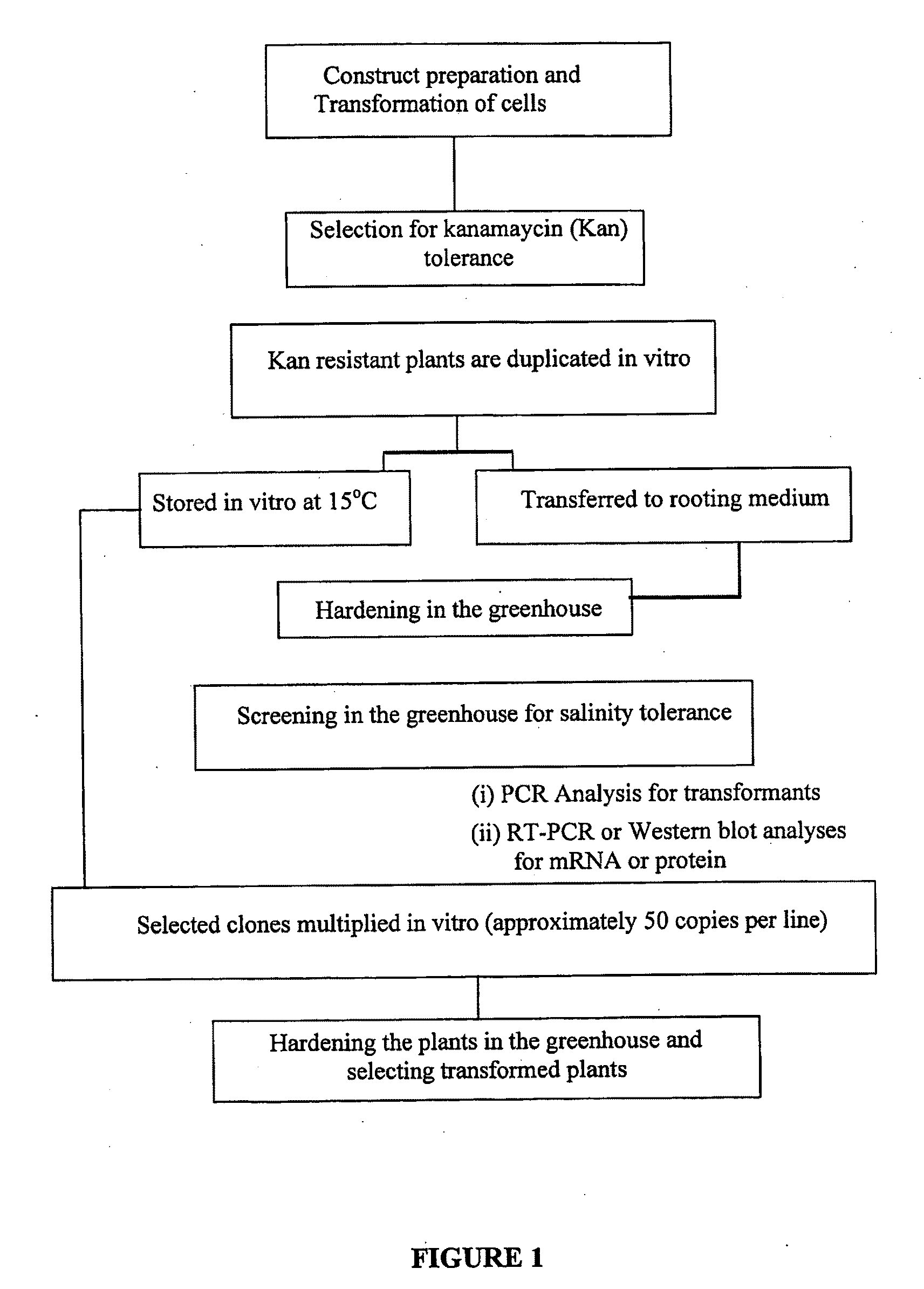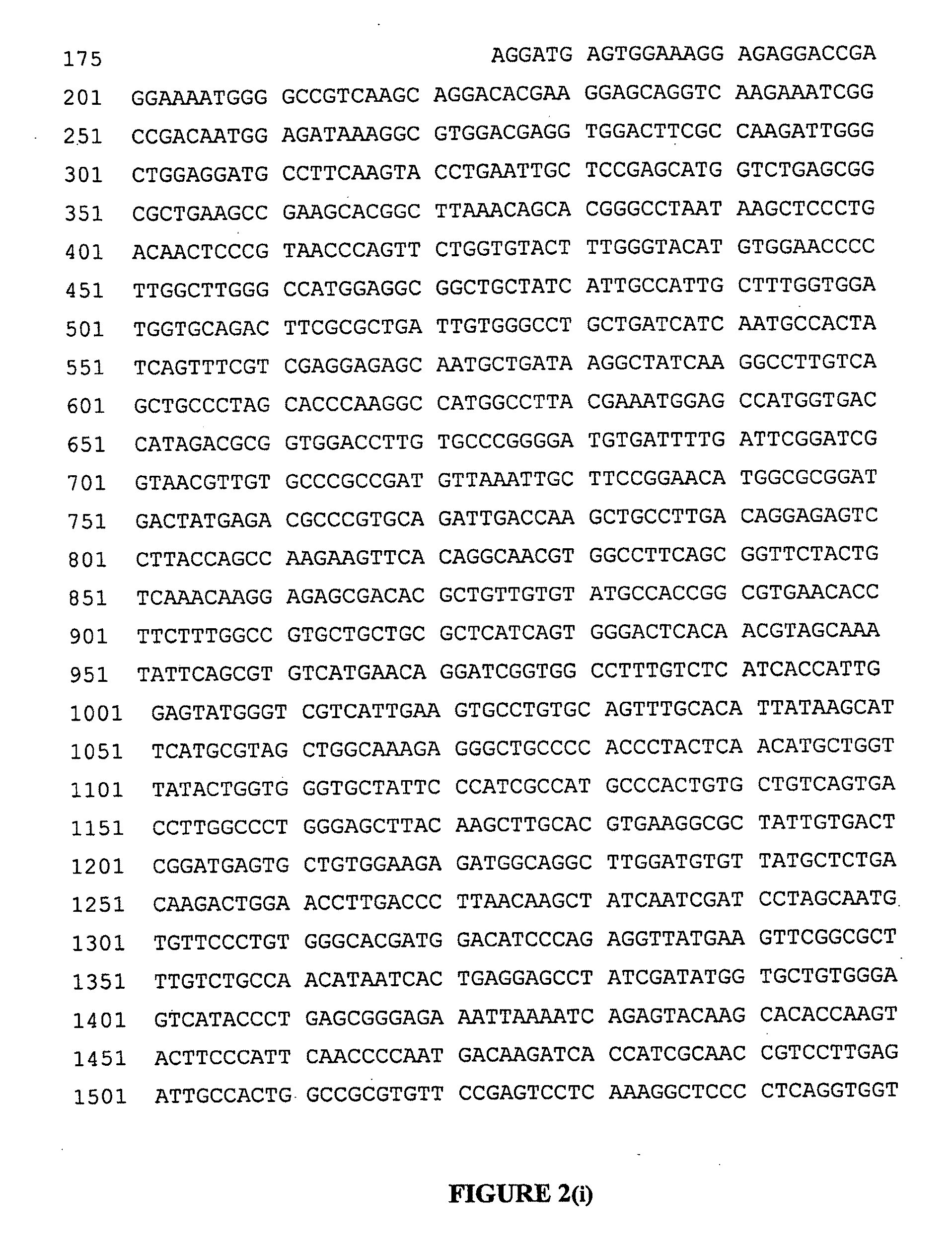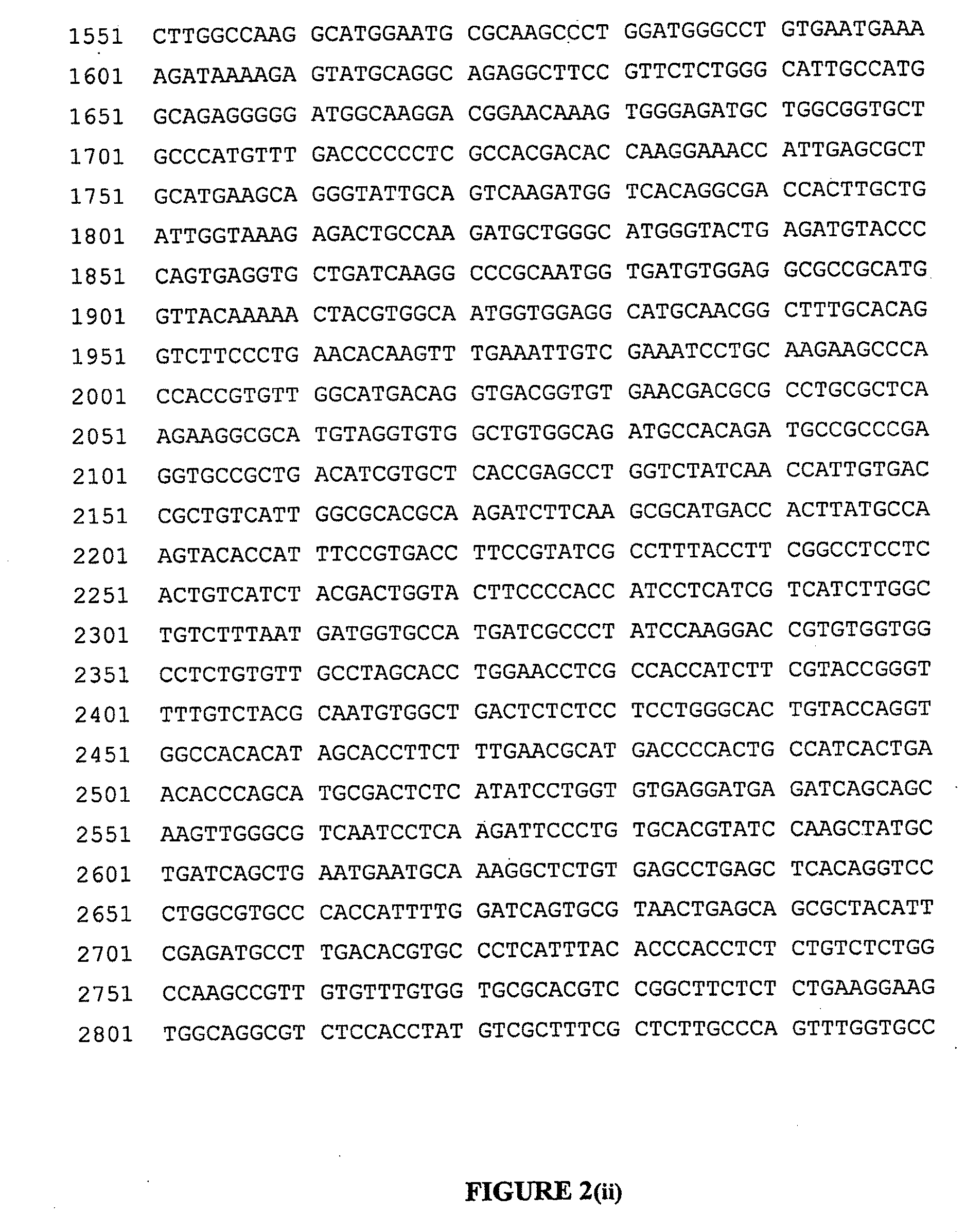Salt resistant transgenic plants
a transgenic plant, salt-resistant technology, applied in biochemistry, sugar derivatives, organic chemistry, etc., can solve the problems of increasing salinization of agricultural soils, affecting the growth and productivity of agricultural crops, and unable to improve irrigation efficiency and drainage system
- Summary
- Abstract
- Description
- Claims
- Application Information
AI Technical Summary
Benefits of technology
Problems solved by technology
Method used
Image
Examples
example 1
Salinity Tolerance in Tobacco Plants Expressing D. acidophila PM H+-ATPase
DNA Constructs
[0112]Two constructs of the DAHA (D. acidophila PM H+-ATPase): A) the intact gene (SEQ. ID NO:1, FIG. 2); and B) a C-truncated version lacking the 120 last amino acids coding region (SEQ. ID NO:2, FIG. 3), were prepared by incorporation of Not1 restriction sites through polymerase chain reaction to nucleotides 175 and 3638 of DAHA gene (to obtain intact D. acidophila PM H+-ATPase) or to nucleotides 175 and 3126 of DAHA gene (to obtain the C-truncated D. acidophila PM H-ATPase).
[0113]The deletion of the C-terminal domain, which functions as an auto-inhibitory domain in higher plants and in Dunaliella (Palmgren M G (2001) supra; Sekler I & Pick U (1993) supra), is expected to enhance the activity of the expressed enzyme, as demonstrated previously by expression of a C-truncated AHA-2 ATPase from A. thaliana in yeast.
Transformation Constructs and Vectors
[0114]The genes were cloned into the plant tra...
example 2
Salinity Tolerance in Potato Plants Expressing D. salina PM H+-ATPase
[0120]An H+-ATPase gene from Dunaliella salina (SEQ. ID NO:3, FIG. 6) was constructed into Ti plasmid and transformed into potato leaves of the cultivar “Desiree”. After selection for tolerance to kanamycin, plantlets regenerated from the transformed leaves were transferred to tubes for rooting and growth. The resulted transgenic plants were hardened in a glass-covered greenhouse. A total of 120 plants representing 36 independent transgenic lines were hardened. Other clones of the same lines were stored in vitro (146 plantlets). Selection of plants tolerant to salinity was performed as detailed in FIG. 1. After selection for tolerance to kanamycin, plantlets were transferred to tubes for rooting and growth as described in Example 1. Other transgenic plants were hardened in a glass-covered greenhouse. Several clones were hardened, and other clones of the same line were stored in vitro (FIG. 1).
[0121]Plantlets were p...
example 3
Cloning of aha-2 / D. Acidophila H+-ATPase Chimeras
Expression of Plasma Membrane H+-ATPases in Plants
[0130]The plasma membrane H+-ATPase involved in salinity tolerance from Arabidopsis thaliana, cloned into the plant transformation vector #288 (aha-2, FIG. 9), was introduced into Agrobacterium strain LBA4404 (FIG. 10). Tobacco wild type plants (SR1) were transformed with these Agrobacteria. Transformed plants were selected in vitro on kanamycin containing media. Selected transgenic plants were evaluated for enhanced salinity tolerance. FIG. 9 depicts H+-ATPase constructs in plant transformation vector #288. Lane 1: 1 Kb ladder (Fermentas) Top band: 10 Kb Low band: 1.5 Kb. Lane 2: Arabidopsis thaliana H+-ATPase (aha-2). Lane 3: Chimera of Arabidopsis thaliana H-ATPase (aha-2) (bases 1-2057) with the Dunaliella Acidophila C-terminal area (bases 2058-2847). Lane 4: Arabidopsis thaliana H+-ATPase (aha-2) (bases 1-2195 and 2434-3030) including Dunaliella acidophila trans-membrane loop 7-8 ...
PUM
| Property | Measurement | Unit |
|---|---|---|
| diameter | aaaaa | aaaaa |
| concentration | aaaaa | aaaaa |
| temperature | aaaaa | aaaaa |
Abstract
Description
Claims
Application Information
 Login to View More
Login to View More - R&D
- Intellectual Property
- Life Sciences
- Materials
- Tech Scout
- Unparalleled Data Quality
- Higher Quality Content
- 60% Fewer Hallucinations
Browse by: Latest US Patents, China's latest patents, Technical Efficacy Thesaurus, Application Domain, Technology Topic, Popular Technical Reports.
© 2025 PatSnap. All rights reserved.Legal|Privacy policy|Modern Slavery Act Transparency Statement|Sitemap|About US| Contact US: help@patsnap.com



